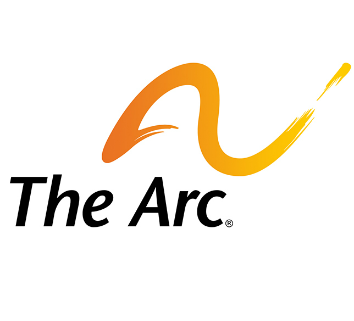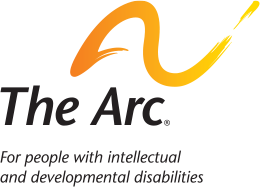By Elizabeth L. Gray, CELA, Special Needs Alliance®
As we approach tax season, it is important to understand the different tax credits, deductions, and liabilities affecting individuals with disabilities and their families. This is a complicated subject. This article provides general information. If you would like to get advice for your situation, you should consult a professional with knowledge of both taxation and special needs planning.
Claiming a Dependent
The IRS defines an individual with disabilities as someone with a permanent and total disability that results in the inability of that individual to engage in any substantial gainful activity. A qualified physician must certify that the condition has lasted or can be expected to last continuously for 12 months or more, or that the condition can be expected to result in death. Substantial gainful activity is considered the performance of significant duties over a reasonable period of time while working for pay or profit, or in work generally done for pay or profit. Full-time work (or part-time work done at the employer’s convenience) in a competitive work situation for at least the minimum wage conclusively shows that the individual is able to engage in substantial gainful activity.
You can claim an individual with disabilities as a dependent when:
- they have lived with you for more than half of the tax year;
- you have provided at least half of their support for the tax year; and
- they are your child, stepchild, foster child, or a descendant of these; or
- your brother, sister, step-sibling, father, mother, grandparent or other direct ancestor of yours.
- they are not filing a tax return of their own.
Tax Credits and Exemptions
- Child tax credit – For each “qualifying child” who will be under the age of 17 at the end of the year, you may take up to a $1,000 credit, based on a sliding income scale.
- Child and dependent care tax credit – This helps to defray the cost of care services needed in order for you and (if you’re married) your spouse to work. Married persons must both work, or one must work while the other is a full-time student, has a disability, or is looking for work (provided that the spouse looking for work has earnings during the year). There is no income ceiling on this credit, which can equal 20-35 percent of expenses incurred, up to $3,000 for one qualifying individual, and $6,000 for two or more qualifying individuals. People with higher incomes get a smaller credit than those with more modest incomes.
- Earned income credit – This is available for people who work and have a child meeting the dependent qualifications previously described. The child must be under 19, a full-time student under 24, or have a permanent and total disability
- Personal exemption for dependent – The maximum allowable for tax year 2016 is $4,050.The dependent’s gross income for the tax year must be less than $4,000. Gross income does not include income from services the person performs at a sheltered workshop.
Medical Deductions
The following deductions should be considered both by adults claiming a dependent and by individuals with disabilities who are filing for themselves. For most individuals, these medical expenses are deductible only when they exceed 10 percent of the taxpayer’s adjusted gross income. Until tax year 2017, a 7.5 percent threshold applies to filers who are 65 and older. Typical examples include:
- Unreimbursed health care expense – Must total more than 7.5 percent of adjusted gross income. Remember to include travel expenses to and from medical treatments, certain insurance payments from already-taxed income (i.e., long-term care insurance), uninsured medical treatments (eyeglasses, contact lenses, false teeth, hearing aids), laser vision corrective surgery, and most medically necessary costs prescribed by a doctor. For example, if the doctor prescribes a humidifier for the home to help with chronic breathing problems, the device and the additional electricity costs to operate it, could be partially deductible. Remember to keep all receipts for any special medical needs.
- Special schooling, training, or therapy, including medically recommended exercise programs. This includes amounts paid for meals and transportation.
- Aides required for the dependent to benefit from his or her education.
- Diagnostic evaluations.
- Certain home improvements and/or modifications required as a result of your dependent’s condition.
- Special medically recommended diets.
- Conferences and seminars that are medically recommended and that deal specifically with the medical condition the child has, and not just general health and well-being. Unfortunately, this does not include deductions for meals and lodging incurred while attending the conference or seminar.
Considerations When Filing for Yourself
If you receive Supplemental Security Income (SSI) payments, those benefits are not taxable. In addition, the SSI payments do not get included in Social Security benefits.
What about regular Social Security or Railroad Retirement benefits? Part of the amount received may be taxable. Generally, if the only income received during the year was Social Security or Railroad Retirement, then the amount would not be taxable. However, if an individual received income during the year in addition to Social Security or Railroad Retirement, then half of the Social Security benefits plus the other income may be taxable, depending on your filing status (individual, head of household, etc.) and the total.
If you are receiving disability benefits under a disability retirement plan that was funded by your employer, those benefits are considered earned income until you reach your minimum retirement age. However, payments received from a disability insurance policy under which you have paid the premiums are not earned income.
Other considerations include:
- Impairment-Related Work Expenses deduction – This is for attendant care services necessary for you to maintain employment. Such services qualify as a trade or business expense. This is available only if the you have a physical or mental disability that is a functional limitation to employment or that substantially limits one or more major life activities (i.e., walking, speaking, performing manual tasks, breathing, learning, or working).
- Elderly and disabled tax credit – Available to every U.S. citizen, who is 65 or older at any time during the tax year. Tax payers who are under 65 may claim the tax credit if they are retired on permanent and total disability under an employer’s plan, or if they receive taxable disability income during the year and do not reach mandatory retirement age by the first day of the tax year.
Special Needs Trusts and ABLE Accounts
Special needs trusts (SNTs) and ABLE accounts are two important financial planning tools that can significantly contribute to an individual’s quality of life. It is important to understand tax liability for each.
Special Needs Trusts
Income generated by a SNT is taxable and trust expenditures are eligible for deductions, but who is liable depends upon the type of trust involved:
- A third party trust is set up by an individual for the benefit of someone else (for instance, a parent may establish a trust for a child). When the trust is revocable, meaning that the person who created it can make changes, it is considered a grantor trust and taxes are paid by the person who established it. Once the trust becomes irrevocable, it must report any taxable income or gross income of $600 or more in a given tax year. The trust may either pay the tax itself or issue a form facilitating payment by the beneficiary. Issuing the form to the beneficiary may not be a bad thing because trust tax rates are high, while the beneficiary may be in a low-income tax bracket. Given the personal exemption and, in many instances, the standard deduction, no tax payment may be due. Distributions that represent trust income become a tax liability for the beneficiary.
- First party trusts, created with funds belonging to the beneficiary with disabilities, are automatically considered grantor trusts in most states (in some locations, it may be necessary to add appropriate language to the trust document), so the beneficiary is responsible for taxes.
- If an SNT is structured as a qualified disability trust, it may be eligible for larger exemptions. In addition to other requirements, the trust must be irrevocable, and the beneficiary must be under 65 when the trust is created.
ABLE Accounts
As a quick reminder, ABLE (Achieving a Better Life Experience Act of 2014) accounts are modeled after the Section 529 savings accounts and enable certain individuals with disabilities to save funds without endangering their eligibility for means-tested government benefits. Contributions to an ABLE account are not tax-deductible and are made with after-tax dollars. However, ABLE account earnings grow tax-free unless distributions in a given tax year are not made for the designated beneficiary’s qualified disability expenses. Qualified disability expenses consist of a wide range of expenditures: education, housing, transportation, employment training and support, assistive technology and personal support services, health prevention and wellness, and more. In addition, distributions for qualified disability expenses are not considered income.
This overview is not intended as tax advice. Individuals with disabilities and their families should consult a tax professional about their specific circumstances.
The Special Needs Alliance (SNA)® is a national non-profit comprised of attorneys who assist individuals with special needs, their families, and the professionals who serve them. SNA is partnering with The Arc to provide educational resources, build public awareness, and advocate for policies on behalf of people with intellectual/developmental disabilities and their families.




 The House and Senate bills reduce federal revenue by about $1.5 trillion over 10 years. Members of Congress have acknowledged that passing these tax cuts will make it easier to justify spending cuts down the road. The Congressional Budget Office (CBO) also notes that automatic spending cuts may be triggered if Congress does not act to prevent them. These automatic cuts could mean a $25 billion dollar cut to Medicare in 2018. Automatic spending cuts could also slash funds that go to states to operate critical programs such as the Vocational Rehabilitation state grant program and the Social Services Block Grant.
The House and Senate bills reduce federal revenue by about $1.5 trillion over 10 years. Members of Congress have acknowledged that passing these tax cuts will make it easier to justify spending cuts down the road. The Congressional Budget Office (CBO) also notes that automatic spending cuts may be triggered if Congress does not act to prevent them. These automatic cuts could mean a $25 billion dollar cut to Medicare in 2018. Automatic spending cuts could also slash funds that go to states to operate critical programs such as the Vocational Rehabilitation state grant program and the Social Services Block Grant.





